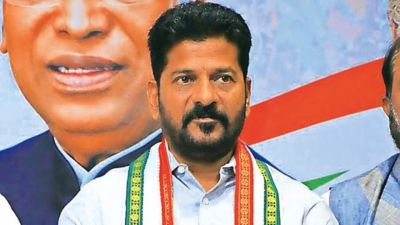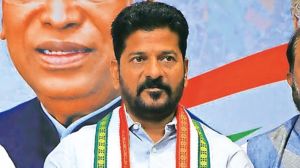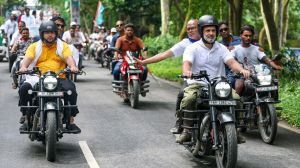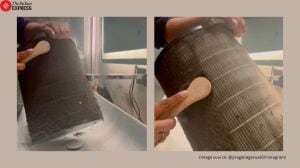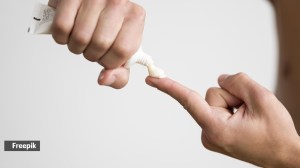The relative odds of evolution
Biologists are divided over a new paper,which refutes Dr Hamiltons theory that when the benefits of helping a relative outweigh the costs of raising an offspring,altruism can evolve,such as among sterile ants and wasps.
Why are worker ants sterile? Why do birds sometimes help their parents raise more chicks,instead of having chicks of their own? Why do bacteria explode with toxins to kill rival colonies? In 1964,the British biologist William Hamilton published a landmark paper to answer these kinds of questions. Sometimes,he argued,helping your relatives can spread your genes faster than having children of your own.
For the past 46 years,biologists have used Dr Hamiltons theory to make sense of how animal societies evolve. Theyve even applied it to the evolution of our own species. But in the latest issue of the journal Nature,a team of prominent evolutionary biologists at Harvard try to demolish the theory. The scientists write that a close look at the underlying math reveals that Dr Hamiltons theory is superfluous. Its precisely like an ancient epicycle in the solar system, said Martin Nowak,a co-author of the paper with Edward O. Wilson and Corina Tarnita. The world is much simpler without it.
Other biologists are sharply divided about the paper. Some praise it for challenging a concept that has outlived its usefulness. But others dismiss it as fundamentally wrong. Things are just bouncing around right now like a box full of Ping-Pong balls, said James Hunt,a biologist at North Carolina State University.
Dr Hamilton,who died in 2000,saw his theory as following logically from what biologists already knew about natural selection. We inherit half of our genetic material from each parent,which means that siblings have,on average,50 per cent of the same versions of genes. We share a lower percentage with first cousins,second cousins and so on. If we give enough help to relatives so they can survive and have children,then they can pass on more copies of our own genes. Dr Hamilton called this new way of tallying reproductive success inclusive fitness. Each organism faces a trade-off between putting effort into raising its own offspring or helping its relatives. If the benefits of helping a relative outweigh the costs,Dr Hamilton argued,altruism can evolve.
Dr Hamilton believed that one of the things his theory could explain was the presence of sterile females among ants,wasps,and some other social insects. These species have peculiar genetics that cause females to be more closely related to their sisters than to their brothers,or even to their own offspring. In these situations,a female ant may be able to spread more genes by helping to raise her queen mothers eggs than trying to lay eggs of her own.
In the new paper,the scientists have developed equations that describe two different behaviours in a population. One strategy might be selfish and the other altruisticleaving their nest after they hatch versus staying to help rear young,for example. The scientists then calculated the conditions in which one strategy or the other takes over the whole population. They found that inclusive fitness theory worked only under special conditions. All the effects that the animals had on each other had to take place on a one-to-one basis. In the real world,individuals may benefit from many other individuals as a group. Standard natural selection,the scientists argue,explains everything inclusive fitness theory was supposed to,without these special conditions. Dr Nowak and his colleagues argue that their analysis should free scientists to think of other ways that altruism and other kinds of social behaviour might evolve.
Thinking about why a worker would sacrifice her own offspring turns out be the wrong perspective on the question,they argue. Instead,they say,we should put ourselves in the queens perspective. They offer a mathematical model suggesting how natural selection could produce offspring that stay at a queens nest. If she produces daughters that stay in the nest,she can spend more time laying eggs,rather than hunting for food to feed her young.
I think theyve done a very thorough job, said Michael Doebeli of the University of British Columbia. Dr Hunt,who studies social wasps,said the Harvard team is basically on target. A number of scientists strongly disagree,though. Frances Ratnieks of the University of Sussex argues that the Harvard researchers cannot rule out kinship as a driving force in social evolution because their model is flawed. It does not include how closely related animals are.
Andy Gardner,an evolutionary biologist at Oxford,said bluntly,This is a really terrible article. One problem Dr Gardner points to is the Harvard teams claim that the past 40 years of research on inclusive fitness has yielded nothing but hypothetical explanations. This claim is just patently wrong, Dr Gardner said. He points to the question of how many sons and daughters mothers produce among the many insights inclusive fitness has brought.
In most species,the balance is 50-50. But there are exceptions. In some ant species,for example,the ratio is around three daughters for every son. That is because the sterile female workers invest more into female larvae than males. Inclusive fitness theory predicts just this situation,since the workers are more closely related to their sisters than to their brothers.
Dr Gardner and a number of other biologists have co-authored a reply that they will be sending to Nature to challenge the new paper.






- 01
- 02
- 03
- 04
- 05


